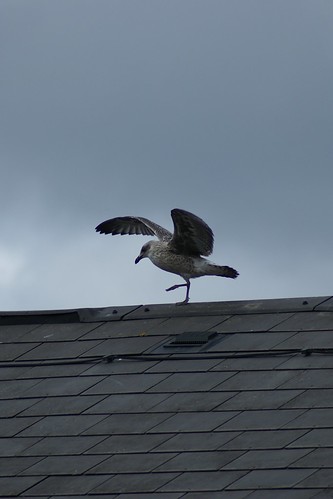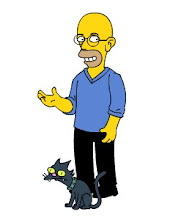I've been shirking on my book reviewing duties. This one,
The Book Thief, by the Australian author
Markus Zusak, is actually from before my
trip to Louisville. So much for taking full advantage of my new work laptop and blogging during my journey across the Atlantic.

Appropriately enough for a novel narrated by Death, the novel begins with the death of a young German boy by the side of a railway. Alongside stands his nine year old sister, Liesel, with whom he was to be fostered to a family in Molching, a small town outside of Munich. This fostering is driven by the imprisonment of their communist parents at
Dachau concentration camp at the beginning of the Second World War. Liesel is first noticed by Death at this point while he is collecting her brother, but Death also sees her mindlessly steal a book, and so denotes her as the Book Thief of the title. Liesel eventually reaches her destination on Himmel Street in Molching, where she meets her new foster parents, the warm, accordion-playing, house painter Hans Hubermann, and his ill-tempered, foul-mouthed but deep-down loving wife, Rosa. At first life is relatively unperturbed by the ongoing war, but as time passes it circles closer and closer to Molching and the Liesel's new family. In Molching, Liesel comes to know a number of people who will significantly touch her life. Her neighbour Rudy, known throughout the town for a stunt in which he "
blacked-up" with coal dust to mimic his hero
Jesse Owens, becomes her best friend and a budding, if ultimately unfulfilled, romantic foil. Through her foster mother's work as a laundress, she also meets the wife of Molching's mayor, Frau Hermann, a woman still bereft at the loss of her son in the First World War, but who has a library that Liesel comes to love (and steal from). And then, thrown into the family by the rounding up of Jews by the Nazis, comes Max Vandenburg, the son of one of Hans' friends from his earlier soldiering days. Because of his Jewish identity, Max must be hidden in the Hubermann's home, in which Liesel becomes his contact with, and his source of news from, the outside world. This focused point of contact becomes a strong bond, one which sees Liesel reading the books she steals to Max, and Max writing and illustrating a small book about Liesel. But, as the depredations of the war make life increasingly difficult in Molching, and Hans' kind actions draw attention to their home, Max must again flee to an uncertain fate. Less uncertain, however, is the fate of Himmel Street, whose calamitous end is gradually, and calmly, approached by the narrator.
It's an odd book to describe this one. It's an extremely well-told tale of lives led in the shadow of wartime, and one told, unusually, from the German side of the war, and by a fairly singular narrator. And I really enjoyed it. But because the Second World War is such a familiar piece of collective history, and despite the book's distinguishing points of view, it's not quite as significant a book to me as it appears to be for many of its reviewers. Which all translates into my overall view that, while I'd definitely rate it, I'd not get ecstatic over it.
The book does have a lot to recommend it. The narration by Death is very well done, particularly in that it presents a cool and dispassionate view of the death and destruction of the war at the large scale that makes it all the more moving when it comes to the loss of the novel's principal characters. It helps that Death cuts such a humane figure in the book; though kept busy by the war, his role in collecting souls from those caught terminally in its consequences is done tenderly. This all makes Death something of a pleasing conundrum as a character, caring yet distant, and allows the novel to be hung about his recollections.
The human characters are all drawn well, though more in the sense that you like them rather than them being fully three dimensional creations. There are "good" characters that you come to know and understand well, and "bad" characters who appear too briefly to become any more than cyphers or proxies for the Nazi regime. And the reader is never in doubt about which is which.
On this latter point, the book does occupy the rather uncomfortable "good German" sub-genre. While it's unquestionably the case that many Germans were appalled by the actions of the Nazi regime, this sub-genre is uncomfortable because it's equally unquestionably the case that all too many other Germans bought entirely into the fascist mindset that led to the Second World War and the Holocaust. So art that presents the "good German" is always viewed, at least by this reader, with a degree of probably unjustified suspicion. What makes this particular work more interesting on this score is that Zusak, though Australian, has a German mother and an Austrian, house painter father. So there's a temptation to read a little too much into the presentation of "good German" characters (though Zusak's parents are almost certainly of the post-war generation).
Anyway, regardless of my niggling doubts, and if you're not yet tired of the Second World War, it's an imaginative and worthwhile read. If just for the character of Death alone.







.png)



